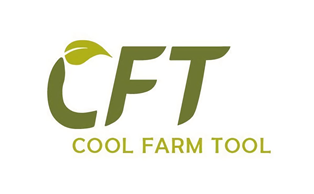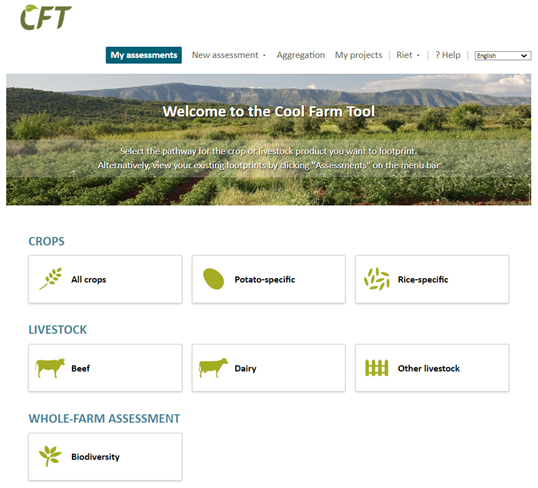
Introduction
The Cool Farm Tool is a farm-level GHG emissions calculator that integrates both crop and livestock systems by quantifying on-farm GHG and soil carbon sequestration. It allows farmers to evaluate different management systems to assess the impact on GHG emissions and has been adopted for use worldwide. Video demos provide a step-by-step tutorial for using the tool.
The CFT calculator is based on empirical research from a broad range of published data sets and IPCC methods. The system boundary for the livestock module in the CFT is the farm gate, which means that emissions related to the transport and processing of the animals and animal products are excluded.
Description of the innovation
Beef | Parameters | Time needed | Complexity | Complete by | Cost |
✓ | Tier 2 (IPCC) |
| Relatively easy, but may require specific documentation, quick to fill. | Farmers and food supply chain managers | Free |
What makes this tool different in comparison to other tools?
Within the calculation of the manure emissions, also emissions from bedding material are included.
Enteric fermentation
Enteric fermentation is calculated following the IPCC guidelines Tier 2 approach.
The tool does not make use of breed differentiation with default live weight or breed-specific daily live-weight gain factors, as there are too many different breeds and cross breeds. The user is also asked to specify if the farm is organic or conventional for benchmark purposes, but with no direct impact on emissions.
Two categories are considered: breeding (and finishing farms) and intermediate or finishing farms. Within each category, a more specific category can be selected (livestock type). Also, the number of animals, live weight and ADG, and length of phases (juvenile, adult productive, adult non-productive) are included.
Enteric fermentation can be estimated for each cattle category separately, or calculated at farm/herd level. The quantity of CH4 is calculated via the GE intake, methane conversion factor, and energy conversion of CH4. As emissions are also linked to the digestibility of the diet, DE is also considered (Tier 2 approach) as well as other feed characteristics (% of diet from feed mix, type of grazing, quality of grazing).
Emissions for grazing include both direct and indirect N2O emissions. For this, grazing period and grazing time are required for each animal category. In addition, grass quality is needed to determine the digestibility of the grass, which is linked to enteric fermentation and manure management calculations.
Manure management
Manure emissions from livestock include N2O and CH4, as well as emissions from the production of bedding materials used in stables. CH4 depends on the number of volatile solids excreted, manure management, and average annual temperature. N2O emissions include both direct and indirect emissions from grazing. The amount and type of bedding material are asked to determine emissions.
 Figure 1. Emissions related to bedding material
Figure 1. Emissions related to bedding material
C sequestration
CFT considers two different C stocks: soil organic C and C stored on the biomass of forests. SOC (soil organic carbon) is based on bulk density and carbon density. The latter describes the C available in the top 30 cm of 1 ha of soil. In general, land-use changes (changes e.g. forest to grassland, time since change, percentage of field converted) are taken into account, as well as management changes (change in tillage, cover cropping, compost, manure additions, residue incorporation), and annual biomass for trees in cropping systems (tree species and density of trees per hectare).
Impact on farm performance
Socio-economic resilience: The tool is free to use
Animal health and welfare: No animal health or welfare parameters are taken into account
Production efficiency and meat quality: No production efficiency parameters are taken into account
Environmental sustainability: The tool demonstrates and encourages good practices

